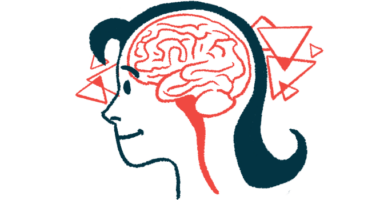Virtual Reality and Motor Imagery With PT Ease Motor Symptoms

Combining a 12-week program of virtual reality (VR) training and motor imagery exercises with standard physical therapy (PT) significantly lessened motor symptoms — including tremors, slow movements (bradykinesia), and postural instability — among people with Parkinson’s disease, according to a recent study.
“To the best of our knowledge, this is the first trial to show the effects of … virtual games and [motor imagery] along with routine PT on the components of motor function such as tremors, posture, gait, body bradykinesia, and postural instability in [Parkinson’s disease] patients,” the researchers wrote.
The study, “A Randomized Controlled Trial of Motor Imagery Combined with Virtual Reality Techniques in Patients with Parkinson’s Disease,” was published in the Journal of Personalized Medicine.
Parkinson’s disease is characterized by motor symptoms that include slow, difficult movements, called bradykinesia, stiffness, tremors, and instability, in addition to an array of other non-motor problems.
Many patients benefit from physical therapy, which helps in regaining motor skills and enhancing independence. However, such gains can be lost in the weeks or months following the therapy program, and many patients struggle to be compliant with continuing exercise at home.
Recent evidence suggests that virtual reality training — using video game systems — may be a highly effective supplement to physical therapy, with the ability to improve motor learning and brain function. VR training also has been shown to boost attention, self-esteem, and motivation, as well as increase levels of the brain’s reward chemical, dopamine, which may increase the likelihood of participation and therapy adherence.
Motor imagery training, known as MI, is a process in which participants imagine themselves performing a movement without actually moving or tensing the muscles involved in the movement. It is thought that such activity strengthens the brain’s motor cortex, and also may be a promising therapeutic approach in Parkinson’s.
Now, a team of researchers in Pakistan examined whether a combined approach of VR and MI could lessen disease symptoms in people with Parkinson’s. Patients ages 50 to 80, with idiopathic Parkinson’s — whose disease is of unknown cause — were recruited from the Safi Hospital in Faisalabad.
The 41 who participated all had intact cognitive function and mild to moderate Parkinson’s symptoms.
Each was randomly assigned to receive either standard physical therapy or PT in combination with VR and motor imagery training for 12 weeks. There were 20 patients in the intervention group that received the combination therapy and 21 in the control group, who had standard PT.
The intervention consisted of a one-hour session every other day (three times weekly), including 40 minutes of routine physical therapy, 10-15 minutes of VR, and 5-10 minutes of motor imagery. Control participants received 40 minutes of physical therapy and 20 minutes of walking and cycling at each session.
In the VR sessions, participants played games on a Nintendo Wii video game system. The games were aimed at improving motor function, balance, and daily activities, with the degree of difficulty increasing as patients progressed.
In MI therapy, participants watched videos of normal movements performed by healthy people followed by a video of themselves performing the movements, and then were asked to compare the two. Participants then closed their eyes and imagined themselves performing the tasks — correcting any abnormalities they observed in the video.
Motor function was measured at the study’s start (baseline), halfway through the intervention at six weeks, and at the end of the intervention at 12 weeks. Participants were then assessed again at a one-month follow-up (16 weeks).
Results showed that, when compared with those in the control group, patients in the intervention group showed “significant improvements” in several aspects of motor function, according to researchers.
“In a combined approach, VR and MI largely aid in the normalization of movement start and completion patterns. These cutting-edge strategies also help patients adjust unproductive motions and actively avoid them when the situation calls for them,” the researchers wrote.
Tremors, rigidity, and gait were lessened at all time points after beginning treatment. Improvements in posture, postural stability, bradykinesia, rapid alternating movements, and ability to rise from a chair, were observed at 12 and 16 weeks, or roughly at three and four months.
The researchers said the combination of mental (motor imagery) and physical (VR) approaches likely has a significant benefit over either approach alone.
“The diverse components of motor learning efforts come into play when VR and MI are combined, improving and adding to the effects of these two distinctive therapies,” the researchers wrote.
They noted, however, that since no participants received only one of these therapies, they cannot conclude that the combination is better than either therapy alone.
Despite also being limited by a small sample size, the results overall suggest that VR together with MI training and routine physical therapy “might be the most effective in treating older adults with mild-to-moderate [Parkinson’s disease] stages,” researchers concluded.








